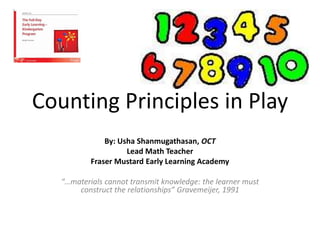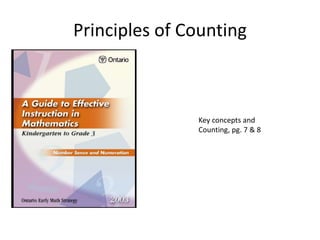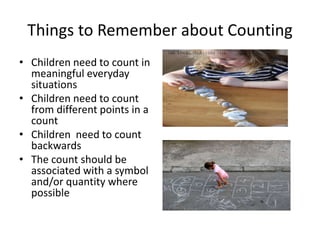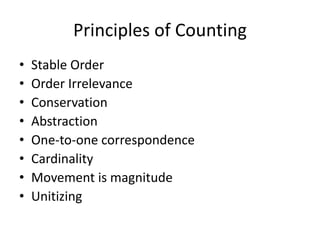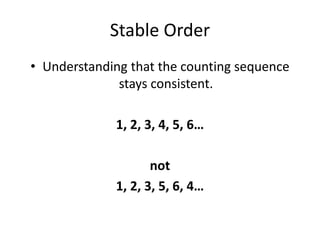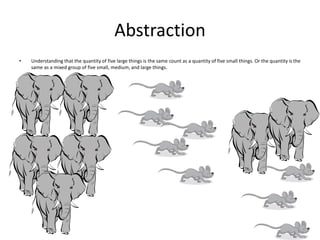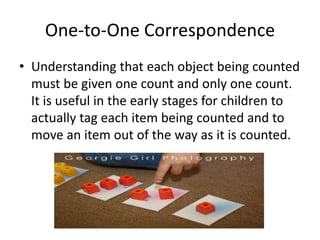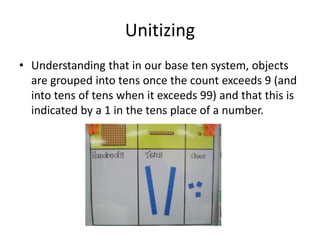This document discusses principles of counting in early mathematics education, including stable order, order irrelevance, conservation, abstraction, one-to-one correspondence, cardinality, movement is magnitude, and unitizing. It provides definitions and examples for each principle. The document also lists resources for finding ideas for intentional play-based learning in mathematics, including the Kindergarten Program document and a video on the topic.
